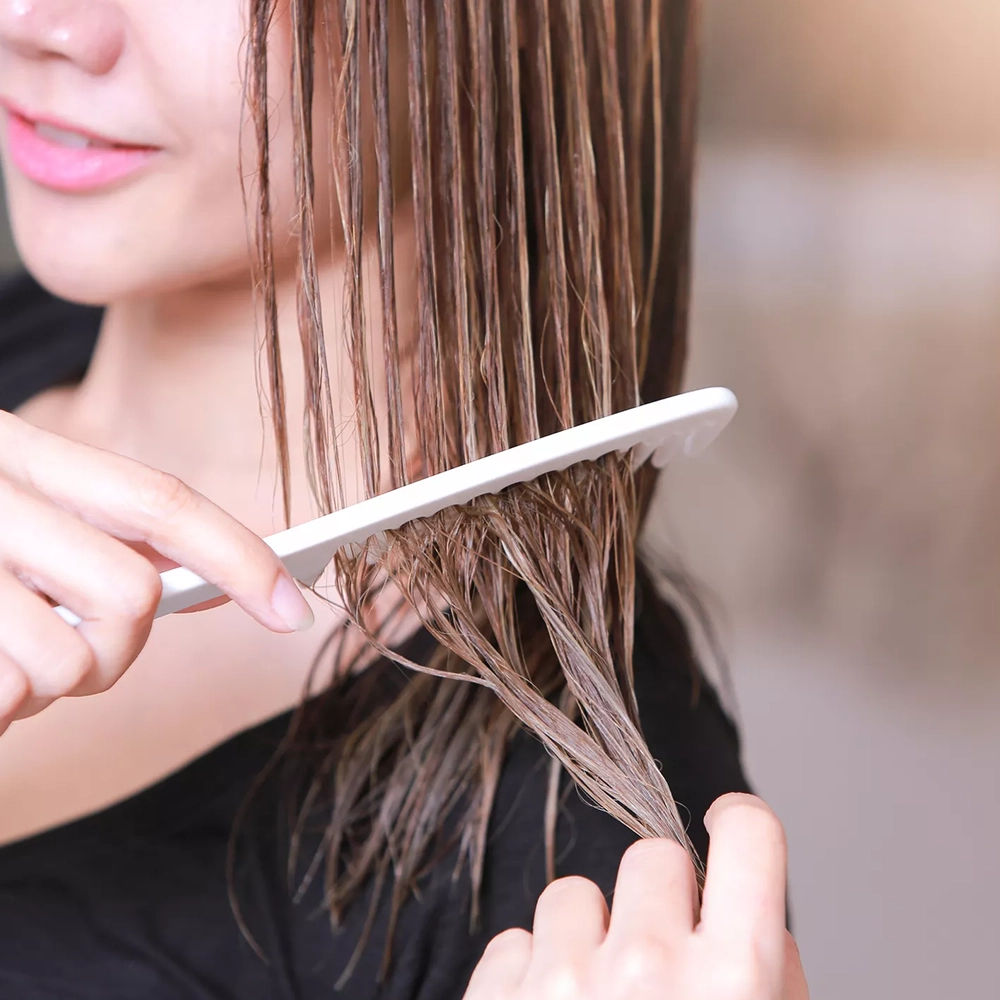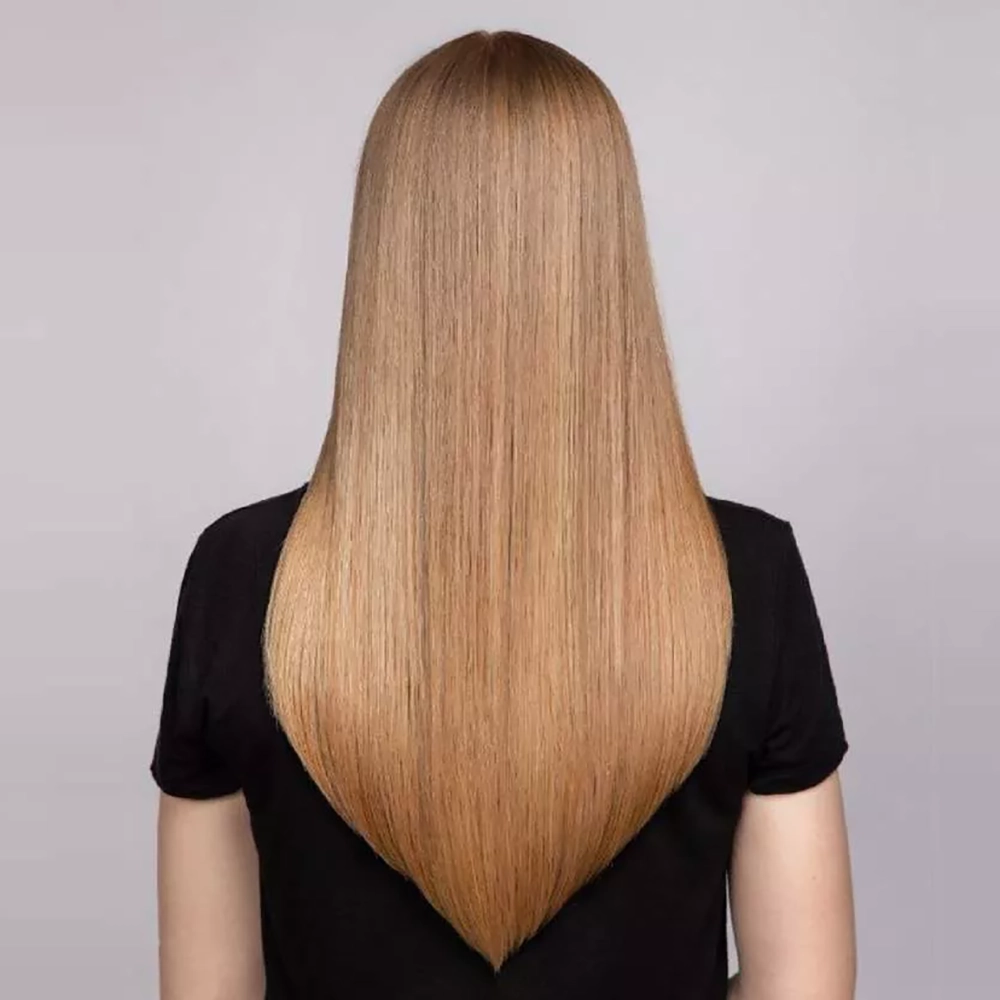Understanding the causes of heat damage
Understanding the Causes of Heat Damage
Heat damage to the hair is a common concern for many individuals, especially those who regularly use heat-styling tools such as flat irons, curling wands, and blow dryers. It is important to have a clear understanding of the causes of heat damage in order to prevent and address this issue effectively.
One of the primary causes of heat damage is the excessive use of high temperatures on the hair. When the hair is exposed to extreme heat, such as temperatures above 450 degrees Fahrenheit, it can lead to the breakdown of the hair’s protein structure. This can result in a variety of hair problems, including split ends, breakage, and dullness.
In addition to high temperatures, improper use of heat-styling tools can also contribute to heat damage. Using a flat iron or curling iron that is not suitable for your hair type, or using it at the wrong heat setting, can increase the risk of damaging your hair. It is important to select tools that have variable heat settings and use them at the appropriate temperature for your hair’s needs.
To prevent heat damage, it is crucial to use heat protectant products before applying any heat to your hair. These products create a barrier between the hair and the heat, helping to minimize damage. Look for heat protectants that contain ingredients like silicones, which can provide a protective coating to the hair shaft.
Another important factor to consider is the frequency of heat styling. Using heat-styling tools on a daily basis can significantly increase the chances of heat damage. Instead, try to limit the use of heat-styling tools to a few times a week and opt for heatless styling methods on non-heat styling days.
In conclusion, understanding the causes of heat damage is essential for maintaining healthy and damage-free hair. By being aware of the role of high temperatures, improper tool use, and frequency of heat styling, you can take proactive steps to prevent heat damage. Incorporating heat protectant products and practicing heat-free styling methods are key strategies in preserving the health and integrity of your hair.
Assessing the extent of the damage
Heat damage to our hair can occur due to various factors such as excessive use of heat styling tools, exposure to the sun, or even chemical treatments. It is crucial to assess the extent of the damage before embarking on a repair routine. By evaluating the signs and symptoms, we can determine the necessary steps to restore our hair’s health and vitality.
One of the primary indicators of heat damage is the presence of split ends. Split ends occur when the hair shaft becomes weak and brittle due to excessive heat exposure. They can be easily observed as the ends of the hair strand split into two or more sections. Another sign of damage is dryness and frizziness. Heat reduces the moisture content in the hair, leaving it dehydrated and prone to breakage. Additionally, the hair might lose its natural shine and become dull and lifeless.
A useful way to assess the extent of heat damage is by performing a strand test. This simple test involves plucking out a strand of hair and examining its condition. If the strand appears weak, has split ends, or feels rough, it is an indication of heat damage. Another method is to consult a professional hairstylist who can evaluate the hair’s condition and provide expert advice on the appropriate course of action.
- Split ends
- Dryness and frizziness
- Loss of shine
- Strand test
- Professional consultation
| Signs of Heat Damage | Assessment Methods |
|---|---|
| Split ends | Observation and strand test |
| Dryness and frizziness | Visual inspection |
| Loss of shine | Comparison with healthy hair |
| Consultation with a hairstylist |
Developing a heat damage repair routine
Developing a heat damage repair routine is essential for those who frequently use heat styling tools on their hair. Excessive heat from straighteners, curling irons, and blow dryers can cause significant damage to the hair, including dryness, breakage, and split ends. However, with the right approach and products, you can repair and restore your hair’s health and vitality.
When it comes to developing a heat damage repair routine, one of the first steps is to identify the extent of the damage. Assessing the damage will help you determine the best course of action and the products you’ll need. Look for signs such as brittle strands, excessive hair fall, and dullness. Once you have a clear understanding of the damage, you can tailor your routine accordingly.
Incorporating nourishing treatments into your routine is crucial for repairing heat damaged hair. These treatments provide the much-needed moisture, protein, and nutrients that your hair needs to regain its strength and elasticity. Look for products that contain ingredients like argan oil, shea butter, and keratin, as they are known to nourish and repair damaged hair.
- Deep conditioning masks
- Leave-in conditioners
- Oil treatments
- Protein treatments
Additionally, it’s important to choose the right products specifically designed for repairing heat damaged hair. Look for shampoos and conditioners that are sulfate-free and gentle on the hair. Avoid products that contain harsh ingredients, as they can further damage your hair. Invest in heat protectant sprays or serums that create a barrier between your hair and styling tools, minimizing the damage caused by heat.
| Products for heat damage repair: | |
|---|---|
| Deep conditioning masks | Leave-in conditioners |
| Oil treatments | Protein treatments |
| Heat protectant sprays | Repairing shampoos |
| Revitalizing hair oils | Styling serums |
Once you have gathered the necessary products, it’s time to implement your heat damage repair routine. Start by washing your hair with a sulfate-free shampoo and follow it up with a nourishing conditioner. Apply a deep conditioning mask once or twice a week to provide intense hydration and repair. Use a leave-in conditioner to add extra moisture and protection from heat. Before using any heat styling tool, apply a heat protectant spray or serum to shield your hair from damage.
Monitoring your progress is key to gauging the effectiveness of your heat damage repair routine. Keep track of your hair’s condition, noting any improvements or setbacks. If you notice that certain products or techniques are not working for you, don’t hesitate to adjust your strategies. Every individual’s hair is different, so it may take some trial and error to find the routine that works best for you.
is a proactive approach to restore the health of your heat damaged hair. By incorporating nourishing treatments, choosing the right products, and monitoring your progress, you can repair and prevent further damage. Remember, consistency is key, so stick to your routine and give your hair the care it deserves.
Choosing the right products for repair
Choosing the Right Products for Repair
When it comes to repairing heat damage, selecting the right products is essential. With a plethora of options available in the market, it can be overwhelming to choose the ideal products that will effectively repair your damaged hair. However, with a little guidance, you can make informed decisions and restore your hair’s health and vitality. Here are some key factors to consider when choosing the right products for heat damage repair:
- Identify your hair type and needs: Every individual has unique hair, and it’s vital to understand your hair type and its specific requirements. Whether you have dry, oily, damaged, or color-treated hair, it’s crucial to pick products that cater to the specific needs of your hair.
- Look for moisturizing ingredients: Heat damage tends to strip the hair of its natural moisture, leaving it dry and brittle. To combat this, opt for products that contain moisturizing and hydrating ingredients such as argan oil, shea butter, or glycerin. These ingredients help restore moisture and prevent further damage.
- Consider protein-based products: Heat damage can also weaken the hair’s protein structure. Therefore, incorporating protein-based products, such as keratin or collagen, can help repair and strengthen the damaged hair strands. However, it’s essential to strike a balance, as excessive protein use can lead to hair breakage.
Additionally, be cautious of products that contain sulfates and harsh chemicals, as they can further aggravate heat-damaged hair. Opt for gentle cleansers and conditioners that are sulfate-free and formulated specifically for damaged hair. You can also consider consulting a hair care professional or stylist for product recommendations tailored to your hair’s unique needs.
| Product Type | Benefits | Recommended Brands |
|---|---|---|
| Deep Conditioning Masks | Intensely moisturizes and nourishes the hair, promoting repair and preventing further damage. | SheaMoisture, Olaplex, Moroccanoil |
| Leave-in Conditioners | Provides long-lasting moisture and protection, helping to detangle and prevent breakage. | It’s a 10, Briogeo, Creme of Nature |
| Heat Protectant Sprays | Forms a protective barrier against heat styling tools, reducing damage and preventing moisture loss. | Ghd, Tresemmé, Tigi |
Remember, there is no one-size-fits-all solution when it comes to choosing the right products for heat damage repair. Experimenting with different products and finding the ones that work best for you may take time, but the effort will be worth it. By selecting products that address your hair’s specific needs, you can gradually restore its health, improve its overall appearance, and prevent further damage.
Implementing heat protection practices
Implementing heat protection practices is crucial for maintaining the health and integrity of your hair. Excessive heat from styling tools can cause damage, leading to dryness, breakage, and even hair loss. By taking proactive steps to protect your hair from heat, you can minimize the risk of damage and keep your locks looking luscious and healthy.
One of the most effective heat protection practices is using heat protectant products. These products create a barrier between your hair and the heat, reducing the amount of damage caused by styling tools. Look for heat protectant sprays or serums that contain ingredients like silicone, which can help to coat the hair and provide a protective layer.
Another important heat protection practice is using the right heat setting on your styling tools. It’s all too easy to crank up the heat to the highest setting for faster styling, but this can be extremely damaging to your hair. Opt for a lower heat setting whenever possible and only increase the temperature if necessary. Remember, using excessive heat can cause irreversible damage to your hair.
- Choose the right styling tools: Investing in high-quality styling tools can make a big difference in protecting your hair from heat damage. Look for tools with adjustable temperature settings and features like ceramic or tourmaline plates, which can distribute heat more evenly and reduce the risk of hot spots.
- Limit heat styling: While it may be tempting to style your hair with heat every day, try to limit your use of hot tools. Embrace natural hairstyles or incorporate heatless styling techniques into your routine to give your hair a break from heat styling.
- Avoid heat on wet hair: Wet hair is more susceptible to heat damage. Before using any heat tools, make sure your hair is completely dry. Using heat on wet or damp hair can cause the water to boil within the strands, resulting in damage.
By implementing these heat protection practices into your hair care routine, you can minimize the risk of heat damage and maintain healthier, more resilient locks. Remember, prevention is key when it comes to protecting your hair from heat, so prioritize using heat protectant products, choosing the right styling tools, and minimizing heat styling whenever possible.
Incorporating nourishing treatments into your routine
When it comes to taking care of our hair, one of the key factors to consider is nourishment. Our hair is constantly exposed to various external factors that can cause damage, and incorporating nourishing treatments into our routine can help repair and restore its health. Nourishing treatments work by providing essential nutrients and moisture to the hair, promoting its growth and overall vitality.
One of the most effective ways to incorporate nourishing treatments into your routine is by using hair masks. Hair masks are deep conditioning treatments that can be applied to the hair once or twice a week. They are packed with ingredients such as oils, vitamins, and proteins that help nourish and strengthen the hair. To apply a hair mask, simply distribute it evenly through damp hair, leave it on for the recommended time, and then rinse thoroughly.
Another way to nourish your hair is by using leave-in conditioners. These products are designed to be applied to the hair and left in without rinsing. Leave-in conditioners provide continuous moisture and protection throughout the day, making them a great option for people with dry or damaged hair. They also help detangle the hair and reduce frizz, leaving it smooth and manageable.
-
- Hair masks are deep conditioning treatments
- Leave-in conditioners provide continuous moisture and protection
- Both hair masks and leave-in conditioners nourish and strengthen the hair
| Treatment | Description |
|---|---|
| Hair Mask | A deep conditioning treatment applied once or twice a week to nourish and strengthen the hair. |
| Leave-in Conditioner | A product that is applied to the hair and left in without rinsing, providing continuous moisture and protection. |
Monitoring progress and adjusting strategies
Monitoring progress and adjusting strategies is an essential aspect of any journey, including the hair care routine. When it comes to addressing heat damage, it is important to keep a close eye on how your hair is responding to the repair efforts and make necessary changes along the way. By monitoring the progress, you can identify what strategies are working and what might need adjustment.
One effective method of monitoring progress is to keep a hair journal. This can be as simple as noting down any improvements or setbacks you observe in your hair’s health and appearance. Additionally, you can document the products and treatments you have been using, so you can easily track what has been working for you.
Another way to monitor progress is to pay attention to how your hair feels and looks. Are you noticing reduced breakage? Is your hair becoming shinier and more manageable? These are positive signs that your repair routine is working. On the other hand, if you are experiencing continued dryness, brittleness, or lack of improvement, it may be time to adjust your strategies.
-
-
-
- Regular assessments: Schedule regular assessments to evaluate your hair’s progress. This can be done every few weeks or months, depending on your hair type and the severity of the damage. Assessing regularly will help you identify patterns and make informed decisions about whether to continue with the current routine or make adjustments.
- Consult with a professional: It can be beneficial to seek expert advice from a hairstylist or trichologist. They can assess your hair and provide personalized recommendations based on their expertise. Professionals can also help you identify any underlying issues or deficiencies that may be hindering your progress.
- Experiment with different products and techniques: Every individual’s hair is unique, and what works for one person may not work for another. As you monitor your progress, don’t be afraid to try out new products or techniques. Consider incorporating nourishing treatments or adjusting your heat protection practices to see if they yield better results.
-
-
| Product | Description |
| Deep Conditioning Mask | A nourishing mask that deeply moisturizes and repairs damaged hair. It can be used once a week to improve hair elasticity and restore hydration. |
| Leave-in Conditioner | A lightweight conditioner that can be applied to damp hair to provide moisture and protection throughout the day. It helps in preventing further damage caused by heat styling. |
| Heat Protectant Spray | A spray that creates a barrier between your hair and the heat styling tools, reducing the risk of heat damage. Apply it to your hair before using any heat styling tools. |
The journey to repairing heat damage requires patience and adaptability. By monitoring your progress closely and adjusting your strategies accordingly, you can achieve healthier and more resilient hair. Remember, consistency is key, and finding the right products and practices for your specific hair needs may take some trial and error. Stay committed to the process, and you’ll gradually see the positive changes in your hair’s health and appearance.


























